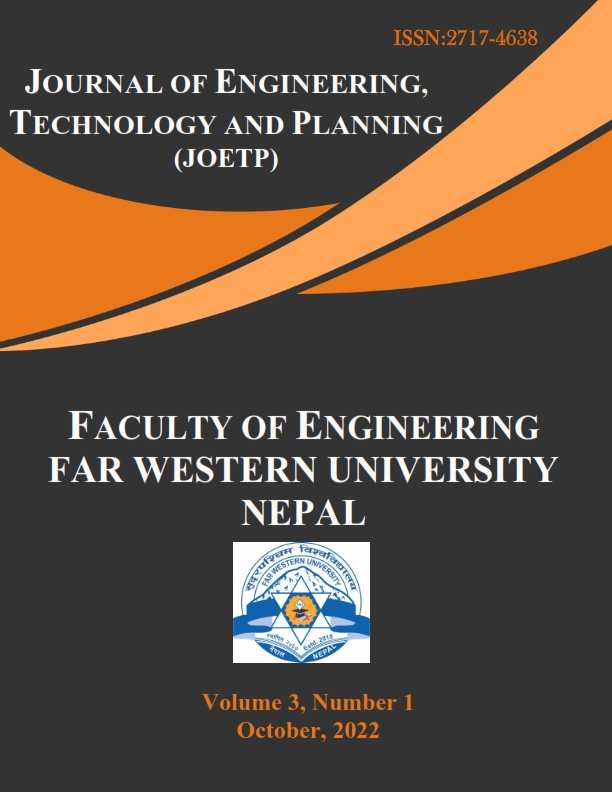The Implication of Solar Chimney for Enhanced Stack Ventilation
DOI:
https://doi.org/10.3126/joetp.v3i1.49600Keywords:
Passive Stack Ventilation, Solar Chimney, CFD Simulation, Thermal PerformanceAbstract
In this study the effect of a solar chimney in enhancing the stack ventilation in an e-Bike Prototype Assembly building is analyzed. The Study area is Birgunj, Nepal. Natural ventilation in the existing plans is studied and compared with an alternate scenario of incorporating a solar chimney. Various parameters like temperature (Air, operative and radiant), pressure and velocity distribution, and comfort parameters (PPM and PPD) are compared. The DesignBuilder software is used to analyze natural ventilation. DesignBuilder internal CFD analysis is used to study the effect of solar chimney as a part of the building on the natural ventilation. Results show that there is significant improvement in ACH and air movement inside the building with incorporation of Solar Chimney. The PPD analysis results show that the comfort aspect is not only related to a single parameter like the air flow, temperature and pressure differential but a combination of these. The design of solar chimney should not only focus to improve a single aspect but a combination of the entire parameters for overall comfort. The study also shows that internal CFD analysis can be effectively used to predict internal condition of a building. The performance of Solar Chimney can be measured either or wholly in terms of air movement/air flow, temperature and velocity distribution and also thermal comfort parameters like PPD and PMV.
Downloads
Downloads
Published
How to Cite
Issue
Section
License
Copyright © Faculty of Engineering, Far Western University

